Good food is one of the most essential parts of traveling to the Manaslu Circuit in Nepal. The taste of the local cuisine shapes your journey and defines your memories. Likewise, foods and drinks that are rich in proteins, minerals, and carbohydrates give you strength while walking along high-altitude trails like the Manaslu Circuit Trek and Tsum Valley in Nepal.
Your body requires a tremendous amount of energy to walk uphill and downhill for a long time. So, good food is a vital part of an adventure. Also, having a good meal that recharges your body until the night is mandatory while trekking in Nepal.
Thus, in this foodie’s guide, we will talk about the various Manaslu Circuit Trek food and drink items available on the menu during your trekking journey. Similarly, we will evaluate the cost of food items and discuss why you should choose to be vegan on the Manaslu trek in Nepal.
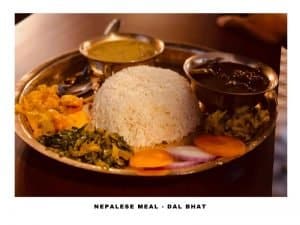
Dal Bhat
Table of Contents
Manaslu Trek Food: Professional to Local Household Dishes
If you have been to Manaslu, you might know the condition of the trails and local villages there. If this is your first time, then remember that the Manaslu Circuit Trail used to be a camping trekking route. Adventurers would carry all the food and drink items necessary for the trekking days from the capital with the help of porters.
But things have changed now; the trail receives a lot of trekkers during the best season for the Manaslu trek. So, it’s a teahouse trek with several local guesthouses at every stopover.
Some of the famous stop points at low altitudes, such as Machha Khola, Jagat, Deng, Namrung, etc., even have wonderful restaurants. They hire professional chefs from March to May and September to November, as it’s the peak season for the Manaslu Circuit Trek. Other places like Lho Gaun, Samagaun, Samdo, and Dharmashala don’t have excellent restaurants, but locals serve great local dishes.
These restaurants cater to the normal cuisines of Nepalese, Tibetan, Indian, and Continental cuisines. However, in high altitudes, locals prepare meals for you. Local household women have the necessary skills to prepare typical Nepalese dishes according to their culture.
You will have fewer food choices in the villages of Tsum Valley like Chokhangparo, Nile, Mu Gompa, Rachen, Chumpling, etc., than in the Manaslu region. However, the local teahouses there provide great local cuisine.
Food Menu for the Manaslu Circuit Trek
When asked about the food menu on the Manaslu trail, the first thing remembered was the Dal Bhat (a Nepalese main course meal).
Aside from the local traditional dishes, the food menu in Manaslu includes the following dishes:
Break Fast
Breakfast options on the Manaslu trek include eggs (different omelets, boiled and scrambled eggs), Tibetan bread, oats, chapati, pancakes, cornflakes, muesli, granola with milk, toasts, hot drinks like tea, and so on. You can ask for the slices of bread to be served with jam, honey, or fruits like apples.
When you trek to the high altitudes, you may not find all these on the menu, but for breakfast during the Manaslu trip, bread and eggs are common everywhere.
Furthermore, you may have other options on the food menu in the low-altitude region. However, the number of items in the set menu decreases with an increase in altitude. It’s because the more you hike uphill, the more you will find normal family guesthouses where transportation of food supplies is difficult.

Sandwich
Lunch and Dinner
For lunch and dinner on the Manaslu Trek, you have choices of noodles, pasta, pizza, momo (dumplings), spaghetti, vegetables, salads, potatoes, rice, and sometimes pizza. Among all, Dal Bhat (rice and vegetables) is the most popular.
A sample of the Manaslu Trek food menu for lunch and dinner:
Noodles
- Fried noodles (vegetable or egg).
- Fried noodles with cheese add-on
- Boiled Noodles, Mixed Fried Noodles
- Chowmein, Tenthuk, and Thukpa
Pasta
- Veg-fried pasta, cheese-fried pasta
- Pasta with cheese and tomato sauce
Sandwich
- Sandwich (optional egg) served with chips
- Sandwich with either grilled tomato or grilled cheese, or both
- Tomato Sandwich with grilled tuna, Club Sandwich
Momo (dumplings)
- Vegetable and potato momo, either grilled or steamed
- Cheese Momo
- Non-veg Momo (Mainly Chicken or Buff)
Spaghetti
- Spaghetti with either cheese, tomato, or both
- Veggie Spaghetti with tomato ketchup
- Spaghetti with tuna, cheese, and tomato sauce
Vegetables and salad
- fried or boiled (fresh) vegetable
- Veg salad
Rice/meals
- Veg, egg, or cheese fried rice
- Dal Bhat (vegetable, non-veg)
- Rice with chicken curry or vegetable curry
Potatoes items
- Boiled potatoes
- fried potatoes with fresh vegetables, an egg, or cheese.
- Roast, mash, or hash brown potatoes.
- Finger Chips (eggs optional)
Snacks items
- Prawn crackers and papad
- Puffcorn
Others
- Sherpa Stews
- Spring rolls, Pakauda, sizzlers, etc.
- Macaroni
For desserts in Manaslu Trek, you have choices like rice pudding, apple pie, chocolate or custard pudding, Mars bar, etc.
The food menu is almost the same for the Tsum Valley trek or the Manaslu Circuit Trek via Tsum Valley. But prices differ.
Snacks
For snacks on the Manaslu trek, you will have normal biscuits, noodles, potato chips, chocolates, etc. As you go higher, you will not find more options for snacks. Thus, you can pack your bags with a few chocolate bars, your favorite Pringles, tuna and goldfish, dried fruits, nuts and seeds, chips, or something like that that is lightweight.
You can buy these things in Kathmandu and carry them with you for the Manaslu trip, as they are lightweight. Also, it will be a significant source of additional nutrition during the trekking days.
If you are buying snacks, then remember that salty snacks are good for Manaslu Circuit hiking. It provides enough calories and also helps to recover salt levels after sweating.
Typical Nepalese Dal Bhat and Dhindo for Meals on the Manaslu Circuit Trek
In most of the places around the Manaslu region, the main course meal is Dal Bhat. It’s the all-time hit recipe of the Nepalese. Besides, it’s a favorite dish, and every household is skilled at preparing it.
Normally, Dal Bhat is a combination of steamed rice, lentil soups, pickles, green salads, and vegetarian or non-vegetarian curry served on a plate. The food has a good amount of carbohydrates, fiber, proteins, minerals, and vitamins in it. Therefore, it’s one of the most popular meals en route to the Manaslu Circuit.
The other reason Dal Bhat is popular is that its energy is long-lasting. There’s a famous saying, “Dal Bhat Power, 24 hours,” meaning Dal Bhat energies your body for 24 hours.
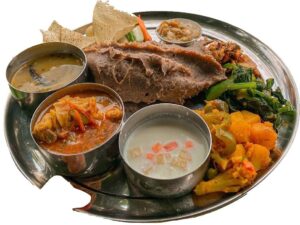
Nepali local cuisine: Dhido
The other main course meal similar to Dal Bhat is the Gundruk Dhindo. Dhindo is a porridge made of corn, wheat, buckwheat, or millet flour.
Back then, dhindo used to be the main meal for people in the mountainous areas of Nepal. But now it has become a fancy diet for people all around the world.
Dhindo can be served with vegetable or non-vegetarian curry, ghee, Gundruk (fermented vegetable leaves), etc. The food is very rich in carbohydrates, dietary fiber, potassium, proteins, and nutrients like calcium and iron.
Can I eat meat or non-vegetarian food on the Manaslu Circuit Trek?
It’s not that you can never eat meat on the Manaslu trek. You can have it. But we don’t recommend eating non-vegetarian or meaty products at high altitudes. We also forbid our trekkers from eating non-vegetarian foods. The main reason behind this is that your digestive system is already under pressure at higher elevations. So proteins will add another burden to the digestive process.
When you have non-vegetarian food, which is extremely rich in proteins, it takes time to break down and divert energy. It stresses your metabolism process and sometimes triggers altitude sickness, such as HAFE.
Trekkers who eat meat products on the Manaslu trek frequently complain about indigestion and acidity the next day. Instead of meat products, you can have an adequate amount of non-vegetarian products that are rich in carbohydrates and fat.
Research by the British Nutrition Foundation also shows that a person who is planning a medium-intensity exercise such as trekking should have the following plan in their diet:
- Carbohydrates: 45–65% (5-8 g/kg/day),
- Protein: 10–35% (0.8–1 g/kg/day),
- Fat: 20–35% (0.5–1.5 g/kg/day),
This also shows that you need more carbs and less protein. Food products like nuts and oats can provide proteins. Also, consume protein bars or protein-related products during the night only so that the digestive system will have enough time to process them.
Also, there are not enough cold storage facilities in the high-altitude tea houses of Manaslu. If they have one sometimes, the meat products won’t be fresh and will be stored for a long time as they have to be transported from the city. They won’t bother visiting repeatedly to buy meat from the regular shops in the cities.
Henceforth, refrain from eating meat while you’re trekking to Manaslu. You can eat non-vegetarian items at low altitudes, but we don’t recommend eating them at high altitudes.
Drinks on the Manaslu Circuit Trek
Drinks are the other basic necessity to consider while trekking in colder regions, like the Manaslu Circuit. Warm up with a cup of hot tea instead of water. For hot drinks, you will find different tea items like masala tea, butter tea, black or milk tea, mint tea, green tea, ginger honey, lemon tea, etc.
Out of all kinds of tea, butter tea has been synonymous with the mountain regions. It’s the most sought-after tea product in the Himalayas. It keeps you away from the extreme cold and prevents cracked lips. To some extent, it is also considered a remedy for altitude sickness.
The other sets of hot drinks in Manaslu are black coffee, hot juice, water, hot chocolate, etc. You will also get thermal flasks in the guesthouses. You can ask to use them or order a hot drink in the flask itself.
Finding a cold drink after a sunny day’s hike is like finding ice after a burn. Thus, some prefer cold drinks after a trekking activity. Sitting in the guesthouse with a cold can of juice or something similar, appreciating the views after a tiring day, is something to think of.
So, some cold drink items on the Manaslu circuit trek are Coke, Fanta, Sprite, canned beers (small and large), wine (red or white), fruit can juice, and mineral water.
As for the soup items on the Manaslu Circuit trek food menu, you will have fresh vegetables, tomato, chicken, garlic, potato, mushroom, and noodle soups.
The above list of drink items for the Manaslu trek is the average list of things offered by guesthouses on the trails. So, you may find more than these in some guesthouses at popular stopovers like Samagaun, Namrung, Deng, Dharapani, Tilije, etc.
Drinking Water on the Manaslu Circuit Trek
Sweating is common while trekking. So, drink water more frequently to replace the water you lose through sweating. Not only that, but water also helps clear out waste products from the body. Thus, it’s the most important substance that you need to consider while you’re hiking to Manaslu.
While trekking, it’s necessary to drink at least 4–5 liters of water per day. Thus, to fulfill this goal of drinking water in Manaslu, always carry a personal water bottle with you. You may not find mineral water bottles everywhere on the trails. You can only see it in guesthouses or local shops at stopovers.
Thus, your water bottles come in handy while you are on the track. We also recommend using your water bottle and refilling it repeatedly on the trails. By not using another plastic bottle, you are providing great help to the environment.
To refill, you can use water taps or clean natural water sources. Drinking water sources such as taps are easily available on the trails at regular intervals, mostly in the teahouses. You can refill water either at lunch stops, in residential areas, in your place of accommodation in Manaslu, or from the communal taps.
The water in the taps is directly sourced from natural resources. Hence, some may not feel comfortable drinking it. Thus, carry chlorine drops, SODIS (sunlight-aided), or purification tablets for purification. These purification methods can also save you some money, as bottled water is expensive in the mountains. If you don’t like the taste of chlorine, get filtered or boiled water from the teahouses to refill.
However, while you are in the residential area, you can buy mineral water, boiled water, cold-filtered water, etc.
Why are smoking and drinking alcohol dangerous during the Manaslu Trek?
Many people have been writing for years about the relationship between alcohol and altitude sickness, while others are busy defending the priority of smoking at high altitudes.
But one thing is certain: drinking alcohol and smoking are both prohibited on the Manaslu circuit trek. Both pose a threat to your life.
Alcohol increases the risk of dehydration and also suggests that drinking alcohol can cause slightly impaired breathing, leading to oxygen deficiency. Eventually, it can lead to altitude sickness. Thus, keeping these risks in mind, it’s advisable to avoid alcohol products on the Manaslu trek.
Similarly, research by Pub Med shows that smoking can slightly decrease the risk of AMS in the short term, but it hampers altitude acclimatization in the long term. Also, it impairs lung function when staying at higher altitudes for a long time.
However, smoking and drinking won’t be a problem at the low altitudes, but you’ll take risks at the high altitudes during the Manaslu Circuit Trek.
Drinks and food prices on trekking trails in Manaslu
The cost of food on the Manaslu Circuit Trek depends on your eating habits. Normally, 30–50 dollars a day covers all-day meals, including breakfast, lunch, and dinner.
Usually, a nutritious breakfast on the Manaslu side costs you around 3–7 dollars. While lunch, let’s say, Dal Bhat, will cost you 6–10 USD, an excellent dinner on the Manaslu circuit trek will cost you around 6–10 USD.
Drinks are expensive in the mountains. A cup of tea costs you around 50 cents to 4 USD in some places at higher elevations. A flask of hot water will cost you around 1-2 USD.
The cost of food varies from teahouse to teahouse on the Manaslu trek. If you go higher, the price increases more than at low altitudes. It’s because the transportation costs will also scale up.
Besides, if you are a food lover, you may spend more on tasting different dishes and traditional cuisines. But if you care little about the type of food, 30–50 USD should be enough for a day.
FAQs about food and drinks
Can I order a pizza during the Manaslu Circuit Trek?
Yes, you can order a normal pizza in the low-altitude areas that have excellent restaurants. But when you hike higher, you won’t find options for pizza on the food menu.
Can I pay in USD for food and drinks in Manaslu?
No, the locals prefer Nepalese currency. You can exchange your dollars in Kathmandu or other major cities. You can also use an ATM to withdraw your money in Nepalese rupees.
In the end,
The above guide for Manaslu Circuit Trek food and drink options is an average list of items available. You will find similar food choices in the Tsum Valley as well.
The number of carbohydrates, protein, and fat in meals that you take on a Manaslu trek should be regulated. Don’t ruin your trip experiences with acidity or indigestion.
Good, hygienic meals lead to a great trekking experience. If you buy a package from Heaven Himalaya, everything is included in the price. You will have a professional guide who regulates your diet as well. Choose good food and beverages wisely.


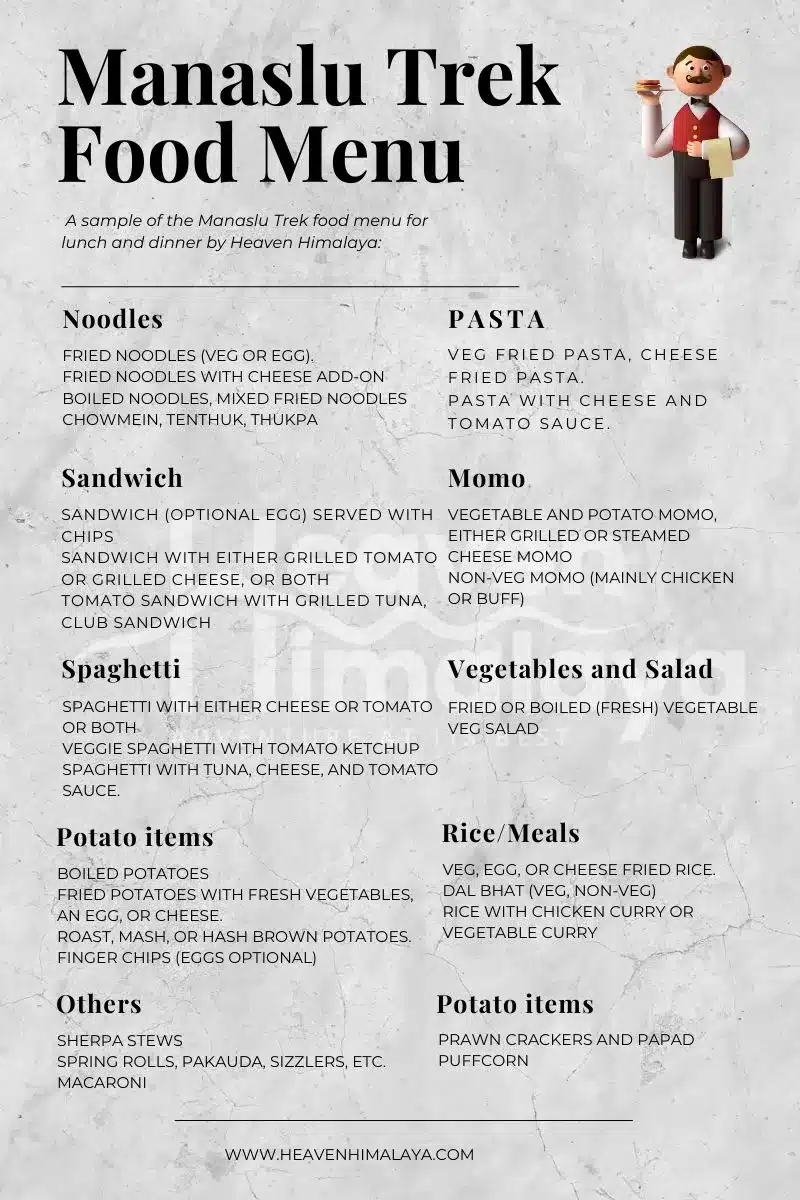

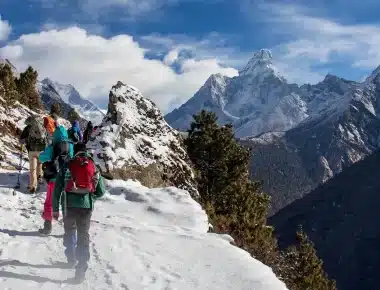
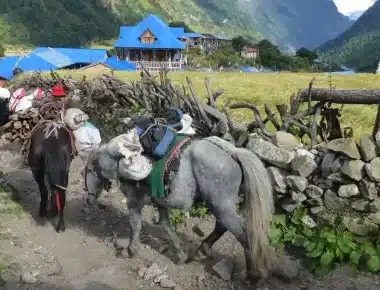
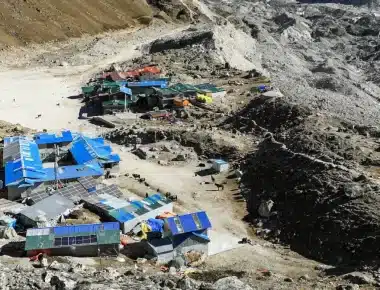
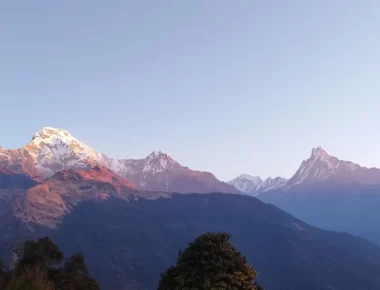

0 Comments